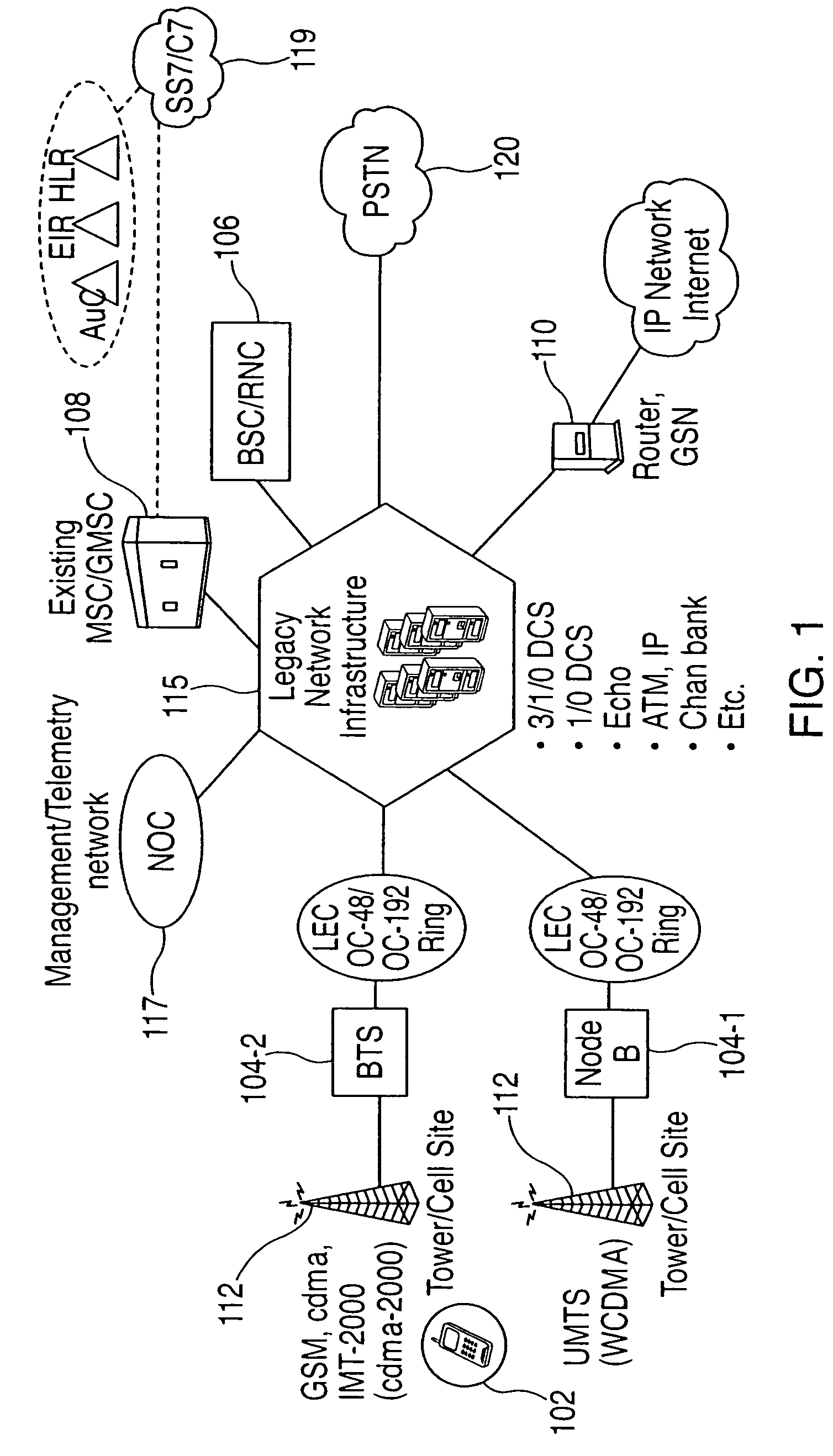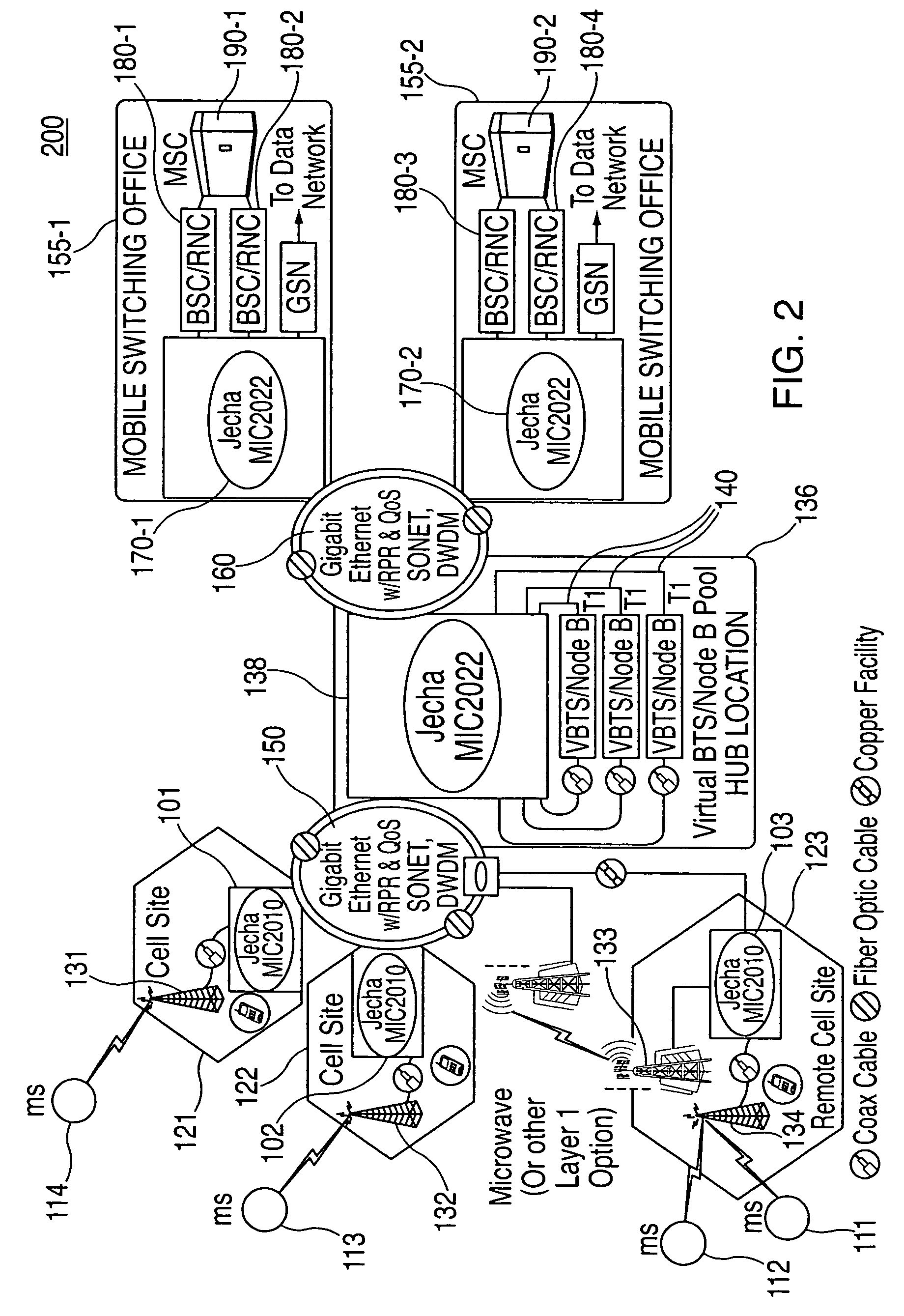System and method for optimizing network capacity in a cellular wireless network
a network capacity and network optimization technology, applied in the field of cellular wireless communication network improvement, can solve the problems of increasing the complexity of the control, management and maintenance of the network, increasing the complexity of the underlying network infrastructure, and increasing the number of base transceiver stations
- Summary
- Abstract
- Description
- Claims
- Application Information
AI Technical Summary
Benefits of technology
Problems solved by technology
Method used
Image
Examples
Embodiment Construction
[0036]In accordance with a preferred embodiment of the invention, a communication network provides wireless communication services, such as wireless data communication services, to a plurality of mobile stations operating within the communication network. Stated specifically, in accordance with one aspect, a novel network infrastructure is disclosed for increasing the efficiency of the network. In accordance with another aspect, a continuous network optimization algorithm is disclosed for further enhancing the efficiency of the network in the context of the novel network infrastructure.
[0037]The system of the present invention provides many important advantages and efficiencies over prior systems. By utilizing the novel network infrastructure of the invention, overall operations costs are reduced, sharing of radio and network bandwidth resources is enabled and the reliability of the access network is increased. More specific advantages include the substantial elimination of stranded...
PUM
 Login to View More
Login to View More Abstract
Description
Claims
Application Information
 Login to View More
Login to View More - R&D
- Intellectual Property
- Life Sciences
- Materials
- Tech Scout
- Unparalleled Data Quality
- Higher Quality Content
- 60% Fewer Hallucinations
Browse by: Latest US Patents, China's latest patents, Technical Efficacy Thesaurus, Application Domain, Technology Topic, Popular Technical Reports.
© 2025 PatSnap. All rights reserved.Legal|Privacy policy|Modern Slavery Act Transparency Statement|Sitemap|About US| Contact US: help@patsnap.com



